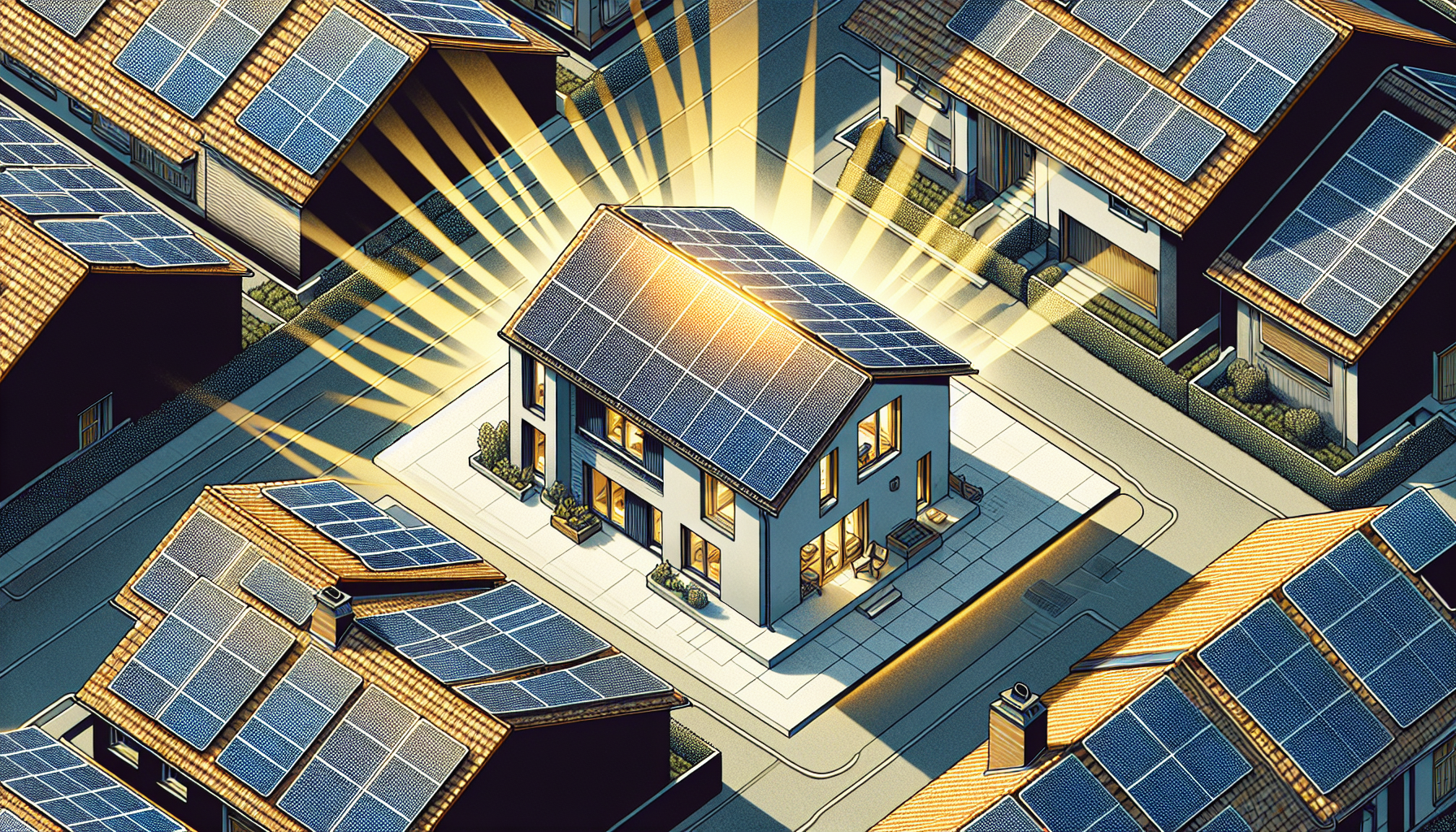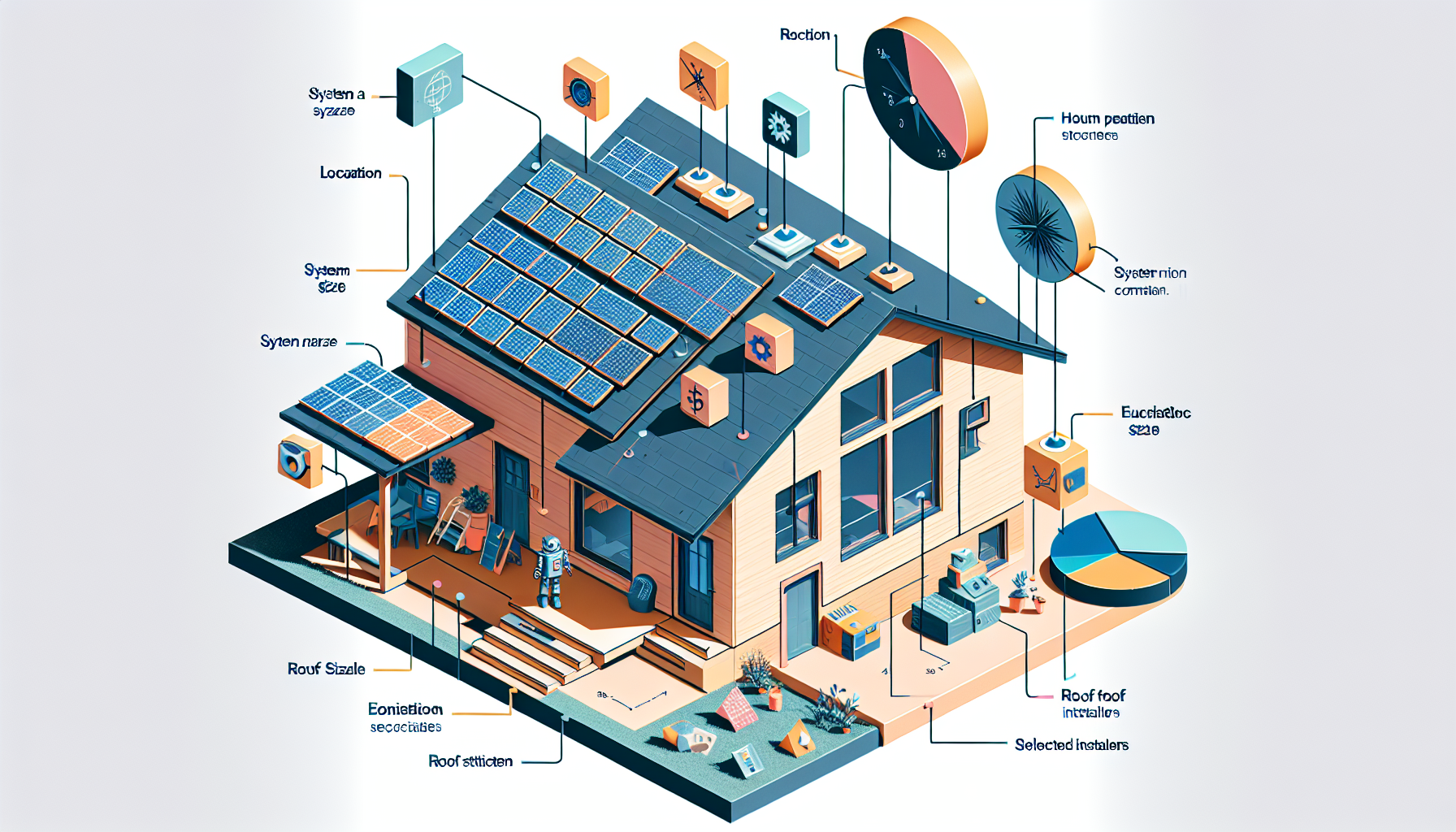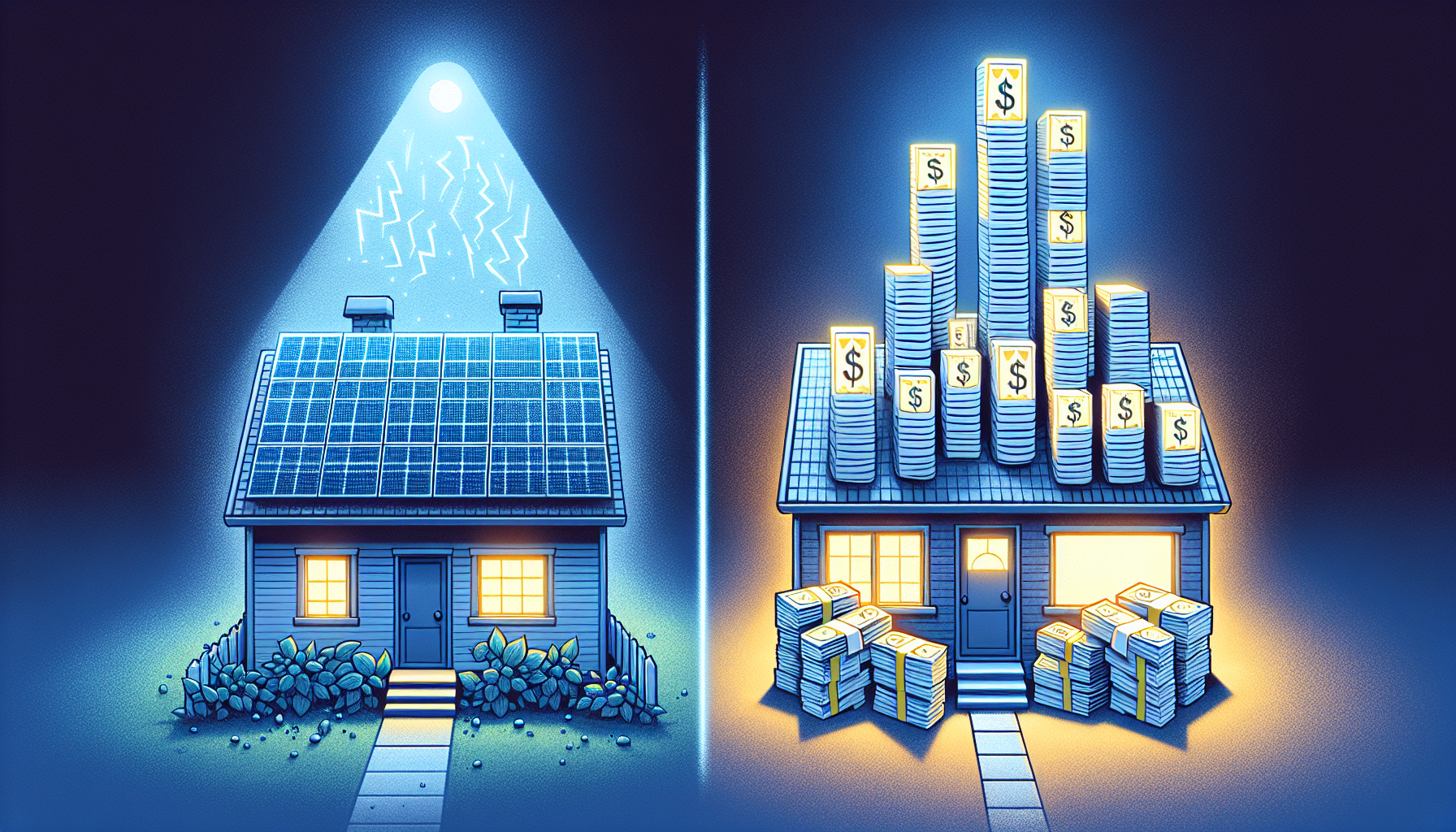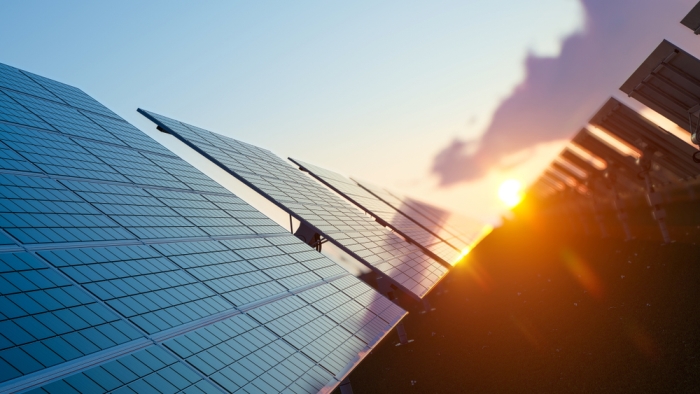Key Takeaways
- Solar payback period, or the time it takes for solar panels to pay for themselves, varies widely in the U.S., with average timeframes ranging from 7 to 15 years, influenced by factors such as local sunshine, electricity rates, system size, and installation costs.
- Economic incentives like the federal solar investment tax credit (ITC) and solar renewable energy certificates (SRECs) can significantly reduce initial solar installation costs and accelerate the payback period.
- Maximizing solar energy production through optimal panel placement, maintenance, and technological upgrades like battery storage is crucial for enhancing the return on investment of solar panels.
Determining the Break-Even Point for Solar Panels

The term ‘solar payback period’ might sound like financial jargon, but it’s simply the time it takes for the amount you save on your electric bills to equal the cost of your solar panel system. It’s the moment when your solar investment transitions from cost to pure benefit.
Across the sunny plains and bustling cities of the U.S., homeowners are discovering that solar panels not only contribute to a greener planet but also to a fuller wallet. But how long does it take for solar panels to reach this pivotal payback point, or in other words, when do solar panels pay? With the increasing efficiency and affordability of solar technology, it’s becoming more common for solar panels to pay off in a shorter period.
Average Payback Period Across the U.S.
Nationwide, the payback period for solar is as varied as the American landscape itself, typically ranging from 7 to 15 years. While some homeowners in solar-rich states may bask in the financial glow of a 5-year solar panel payback period, others in less sunny regions might wait up to 15 years to see their investment pay off. The average returns on investment further illustrate this diversity, with figures like 6.2% in Ohio and a sunny 9.66% in Pennsylvania.
Take Arvada, Colorado, for example, where a 9.2-year payback period stands as a beacon for potential solar adopters, showcasing that regional factors can significantly influence your solar savings journey.
Key Factors Affecting Solar Panel Payback Time
Several key factors act as the gears of the solar savings machine, driving the payback period up or down. The size of your solar installation is a primary cog; larger systems like 6kW or 10kW harness more sunlight, potentially speeding up your journey to break-even. The installation’s ticket price, shaped by factors like your roof’s design and the solar installer’s rates, also plays a critical role.
Additionally, how much you save depends on your state’s electricity rates and the number of sunlight hours your panels bask in each day. It’s a complex equation, but understanding these factors can help you make an informed solar energy investment.
The Economics of Solar Panel Installation

When considering the switch to solar, the economic landscape is as important as the physical one. The average cost to install a photovoltaic (PV) system in America hovers around $3.00 per watt. While this figure sets the stage, the final act of your solar installation’s cost can vary based on a medley of factors, from the solar panels’ quality to the intricacies of your rooftop. And though these costs may differ slightly from state to state, most are within striking distance of that national benchmark.
Upfront Costs Versus Long-Term Savings
The initial outlay for a solar-electric system, averaging about $4 per watt, is akin to planting a financial seed that will grow into a tree of savings. For a medium-sized 4KW system, you might invest around $16,000, a sum that could dwindle your bank account if not for the promise of future reductions in your energy bills. Financing these upfront costs is a journey in itself, with options ranging from solar loans to leasing programs that can ease the burden.
As you navigate these waters, remember that your method of payment, whether you pay cash or take out a solar loan, will influence your solar savings timeline.
Incentives That Accelerate Payback
However, a beacon of financial relief shines in the form of solar incentives. The federal solar investment tax credit (ITC) alone can reduce your system’s cost by 30%, a substantial chunk that can significantly shorten the payback period. Local subsidies and incentives can further sweeten the deal, chipping away at those upfront costs before the federal tax credit even enters the picture.
With these incentives, the economic horizon for solar panel installation brightens, bringing that break-even point closer to the present.
Monthly Electric Bill Savings Unpacked

Transitioning to solar power isn’t just about the big picture; it’s about the monthly triumphs on your energy bills. Homeowners across the spectrum report annual savings ranging from a modest $108 to a more substantial $290. Those with higher electricity usage tend to see more dramatic monthly savings, making solar panels an even more attractive proposition.
Estimating Your Monthly Savings
To estimate your potential monthly savings, follow these steps:
- Start by sizing up your solar system’s energy production.
- Multiply the energy production by your utility’s per kWh rate.
- Determine your average energy consumption, as this will influence the size of the system you’ll need and your payback period.
By multiplying the expected monthly kWh output by the cost per kWh, you can begin to visualize the savings stacking up on your energy bills.
How Net Metering Contributes to Savings
Net metering policies sweeten the solar savings pot by offering credits for the surplus electricity your solar system feeds back into the grid. This incentive not only contributes to your savings but also enhances the overall benefits of the solar panel payback period.
Moreover, if you’re in a state that supports Solar Renewable Energy Certificates (SRECs), you can even sell the excess solar power for additional financial gain.
The Role of Solar Renewable Energy Certificates (SRECs)

Beyond the immediate savings on electricity bills, SRECs represent the green credentials of your solar energy production. Each SREC corresponds to one megawatt-hour (MWh) of solar electricity, encapsulating the environmental benefits of your renewable energy contribution. The market sets the value of SRECs, influenced by supply, demand, and state regulations.
By selling these certificates, you can effectively earn back part of your solar investment, potentially trimming down that solar payback period.
Earning and Selling SRECs
For every megawatt-hour of solar electricity your system generates, you can earn SRECs, which are sold separately from the actual power. But before you can cash in on these benefits, you’ll need to register your system with a tracking system. The avenues for selling SRECs are varied: you might enter into a long-term contract with an aggregator or sell on the spot market.
This additional revenue stream is a boon for solar panel owners, enhancing the value of their investment beyond the scope of energy bill savings.
Calculating Total System Cost and ROI
To fully grasp the financial impact of solar panels, you’ll need to consider both the total system cost and the return on investment (ROI). For a 6-kW home solar system, the national average upfront cost is about $17,700 before incentives.
Calculating the ROI involves a bit of math:
- Subtract the value of solar incentives from the system cost
- Divide by electricity cost and annual usage
- Voila! You have a clearer picture of the long-term financial benefits of your solar panels.
From Initial Investment to Long-Term Gains
Solar panels are not merely a product; they’re a long-term investment that promises to offset their upfront costs over time and continue to reap financial rewards. The journey from the initial investment to long-term gains includes covering the costs of components, labor, and permits when installing solar panels.
Once you’ve navigated these initial financial waters and reached the payback period, you can look forward to continued savings for the lifetime of your solar panels, typically 25 to 30 years.
Tools and Calculators for Accurate Estimates
For those who find the financial intricacies of solar investments challenging, solar ROI calculators are a godsend. These tools account for the total system cost, incentives, and electricity costs, making the payback period calculation a breeze.
State-specific solar calculators can provide an accurate estimate of savings, system size, and payback time, tailored to your local utility rates and rooftop specifics.
Maximizing Solar Energy Production

While understanding the financials is crucial, maximizing the energy production of your solar panels is the key to enhancing your return on investment. With the high initial costs, it’s important to squeeze every drop of sunshine into electricity. Here are some ways to optimize your solar system:
- Install panels at an efficient angle to capture the most sunlight.
- Keep the surfaces of your panels clean to prevent dirt and debris from blocking the sunlight.
- Consider using solar trackers, which automatically adjust the position of the panels to follow the sun throughout the day.
By implementing these strategies, you can maximize the energy production of your solar panels and get the most out of your investment.
Positioning and Maintenance for Maximum Efficiency
The strategic positioning of your solar panels is one of the most effective ways to boost efficiency. Proper alignment to the sun’s trajectory, especially in the Northern Hemisphere, can significantly increase the amount of energy harnessed.
Regular cleaning and maintenance ensure that the panels remain free from obstructions, such as dust or bird droppings, that could block the sun’s rays.
Upgrading Your Solar System
As technology advances, so do the opportunities to improve your solar system. Adding additional panels is a straightforward way to increase your home’s energy production.
Moreover, integrating battery storage systems can further enhance your solar power system’s efficiency and reliability.
Real-Life Examples of Solar Payback Periods
The theory behind solar savings is compelling, but nothing speaks louder than the success stories of those who have walked the solar path before us. These are the tales that paint a vivid picture of the potential that lies in every rooftop solar installation.
Testimonials and Case Studies
Real-life testimonials and case studies provide a mosaic of experiences that highlight the diversity in solar payback periods. From the homeowner in Massachusetts who saw payback in a brisk five years to the Santa Cruz resident who reached it in just over four, these stories emphasize the importance of regional factors in solar investment decisions.
By comparing various regions, we can see that states like:
- Massachusetts
- New Jersey
- California
- New York
offer some of the best IRRs, ranging from 16 to 20 percent, underscoring the importance of location in your solar savings strategy.
Summary
As we’ve journeyed through the world of solar savings, we’ve seen how the solar panel payback period is the linchpin of a wise energy investment.
From understanding the average payback periods and key factors that affect them to weighing the economics of installation costs against long-term benefits, and from unpacking monthly savings to exploring the added advantages of SRECs and maximizing energy production, it’s clear that solar panels are more than just a green choice—they’re a financially savvy one too. With the right information and a bit of sunlight, your solar panels can become one of the brightest investments you’ll ever make.
Start saving money on your electricity bill. Go solar with Sun Source Energy today.
Frequently Asked Questions
What is the average solar panel payback period in the U.S.?
The average solar panel payback period in the U.S. typically ranges from 7 to 10 years.
How can I estimate my monthly electric bill savings with solar panels?
You can estimate your monthly electric bill savings by multiplying your solar system’s expected monthly kWh output by your utility’s per kWh rate. This will give you a rough idea of the potential savings.
What are Solar Renewable Energy Certificates (SRECs), and how can they affect my solar payback period?
SRECs represent the environmental benefits of your solar electricity production and selling them can provide additional income, potentially reducing your solar payback period.
Can adding more solar panels to my system improve my return on investment (ROI)?
Adding more solar panels to your system can enhance your energy production and improve your return on investment (ROI).
Are there any tools available to help me calculate the total system cost and ROI for solar panels?
Yes, solar ROI calculators can help you determine the payback period by considering the total system cost, incentives, and electricity costs. They are a useful tool for this purpose.





